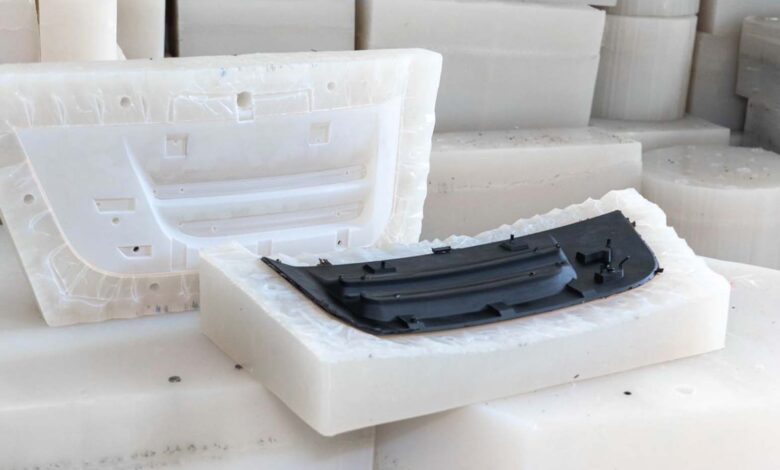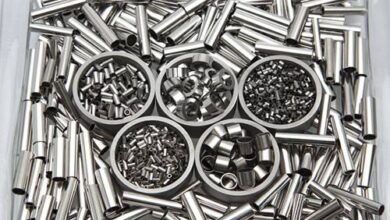
When it comes to prototyping, vacuum casting services are a popular choice among manufacturers and designers. This process allows for the creation of high-quality prototypes that closely mimic the final product, making it an essential step in product development.
In this comprehensive guide, we will explore everything you need to know about vacuum casting services for prototyping.
What is Vacuum Casting?
Vacuum casting is a manufacturing process that involves creating a mold of a master pattern and then using that mold to produce multiple copies of the original part.
This process is often used in prototyping to create low-volume production runs of parts for testing and validation purposes. Vacuum casting is known for its ability to produce parts with high levels of detail and surface finish, making it ideal for creating prototypes that closely resemble the final product.
Vacuum casting is a highly versatile and cost-effective method that allows for the production of complex parts with intricate details. The process starts with the creation of a master pattern, typically made from materials like wax or 3D-printed resin.
This pattern is then encased in a liquid silicone mold, which is vacuumed to remove any air bubbles and ensure the mold fully captures the pattern’s details.
How Does Vacuum Casting Work?
The vacuum casting process begins with the creation of a master pattern, which is typically made from a material such as silicone. This master pattern is then placed in a casting box, and liquid silicone is poured over it to create a mold.
Once the silicone has cured, the mold is cut open, and the master pattern is removed, leaving behind a cavity that is an exact replica of the original part.
This cavity is then filled with the desired material, typically a polyurethane resin, under vacuum pressure. The resin is allowed to cure, and once solidified, the mold is opened to reveal the final part. Vacuum casting is often used for producing high-quality prototypes, small batch production runs, or parts with intricate details and complex geometries.
The process allows for the production of parts that closely resemble the final product in terms of surface finish and mechanical properties.
Benefits of Vacuum Casting Services
There are several benefits to using vacuum casting services for prototyping. One of the main advantages is the ability to create high-quality prototypes that are nearly indistinguishable from the final product.
Vacuum casting service rapidly produces high-quality, detailed parts in small batches, providing a cost-effective solution for testing and validation prior to mass production.
Vacuum casting allows for the use of a wide range of materials, including various types of resins and elastomers, giving designers the flexibility to choose the best material for their specific application. Additionally, vacuum casting is a cost-effective option for producing low-volume runs of parts, making it ideal for testing and validation purposes.
Furthermore, vacuum casting services offer quick turnaround times, allowing designers to rapidly iterate and make design modifications as needed. This can help streamline the product development process and bring products to market faster.
Additionally, vacuum casting is a highly precise and reliable process, ensuring that each prototype produced is consistent and accurate. Overall, the benefits of using vacuum casting services for prototyping include high-quality results, material flexibility, cost-effectiveness, quick turnaround times, and precision, making it an excellent choice for product development and testing.
Applications of Vacuum Casting
Vacuum casting is used in a variety of industries for prototyping and low-volume production. Some common applications of vacuum casting include creating prototypes for consumer products, automotive parts, medical devices, and more.
Vacuum casting is especially useful in industries where high levels of detail and surface finish are required, as it can produce parts with tight tolerances and intricate features.
Vacuum casting is a versatile manufacturing process that is utilized in a range of industries for prototyping and small-scale production. It is commonly employed in the development of prototypes for consumer goods, automotive components, medical equipment, and various other products.
This method is particularly beneficial in sectors that demand precise detailing and a smooth surface finish, as vacuum casting can yield parts with tight tolerances and complex features. The technology allows for the creation of high-quality, functional prototypes that closely resemble the final products, making it an ideal choice for testing and validation before full-scale production.
Choosing a Vacuum Casting Service Provider
When selecting a vacuum casting service provider for your prototyping needs, there are several factors to consider. Look for a provider that has experience working with a variety of materials and can accommodate your specific project requirements.
It is also important to consider the provider’s lead times, pricing, and quality control processes to ensure that you receive high-quality prototypes in a timely manner.
When selecting a vacuum casting service provider for your prototyping needs, there are several factors to consider. Look for a provider that has experience working with a variety of materials and can accommodate your specific project requirements. It is also important to consider the provider’s lead times, pricing, and quality control processes to ensure that you receive high-quality prototypes in a timely manner.
Additionally, make sure to inquire about the provider’s communication and customer service practices to ensure a smooth and efficient collaboration throughout the prototyping process. By considering these factors, you can choose a vacuum casting service provider that meets your prototyping needs effectively.
Conclusion
Vacuum casting services play a crucial role in the prototyping process, allowing designers and manufacturers to create high-quality prototypes for testing and validation purposes. By understanding the vacuum casting process, its benefits, applications, and how to choose a service provider, you can make informed decisions when it comes to prototyping your next product. With its ability to produce detailed and accurate prototypes, vacuum casting is a valuable tool for bringing your design ideas to life.



